CHASING THE INDRI
Journey To Beauty & Chaos In Paradise Islands
Mayotte
& Réunion: A Rendezvous With France in Africa

Journey To Beauty & Chaos In Paradise Islands
Mayotte
& Réunion: A Rendezvous With France in Africa
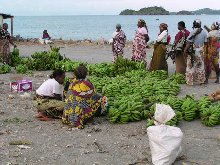 |
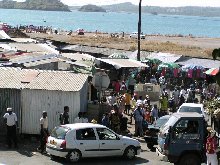 |
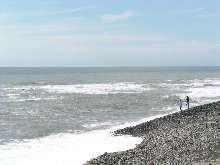 |
|
| Islands, islands, islands! | Mamoudzou market | Market | Indian Ocean |
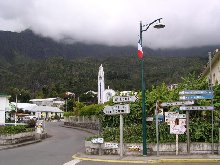 |
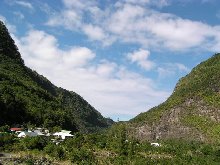 |
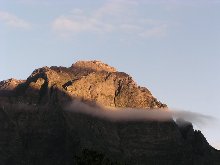 |
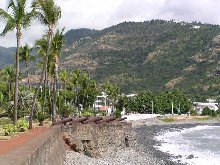 |
| Cilaos - Is this the French Alps? | Mountains | The Alps? | St Denis |
Mayotte
& Réunion: A Rendezvous With France in Africa
Some say that
the sun has set on empires after Hong Kong became Chinese again in 1997.
The description is probably wrong, as old empires like the British and
the French still exist in remnants, albeit in the forms of small islands
scattered across oceans and continents. (Of
course, those more sceptical among you would talk about the new American empire
and its unincorporated territories and new and old satellite states, or of the
Chinese state in the vast non-Han territories in its West.)
I have always loved visiting political oddities, imperial remnants or
not, and it was with this in mind that I visited French outposts in the Indian
Ocean, Mayotte and Réunion, each of which has its own unique history and
political status.
The
French once ruled huge tracts of Africa. Today,
the continent is mostly independent, if you ignore the sizeable French economic
and military presence in many of its ex-colonies, where it continues to pull
strings, either through legal aid, under-table money, or occasional military
intervention. Indeed, a former
French foreign minister once said that Africa was the only continent where
France could still “change the course of history with a few hundred men”.
It
is in Mayotte and Réunion that France continues to rule, officially.
Colonies are politically incorrect these days and hence the great powers
use fanciful names for them. France
has various categories of DOM-TOM’s (Départements d’Outre-Mer &
Territoires d’Outre-Mer). Guadeloupe,
Martinique and French Guiana in the Caribbean, and Réunion are DOM’s, or
Overseas Departments of France. This
means they are treated as part of France, not mere colonies. New Caledonia, Walls & Futuna and French Polynesia are
TOM’s, or Overseas Territories, perhaps a nicer word for colonies.
Between the extremes of DOM’s and TOM’s is a category known as Collectivité Territoriale (Territorial Collectivity), which is like a
form of semi-departmental status. Mayotte
and St Pierre & Miquelon (a small group of islands near Canada) belong to
this category.
----
We
arrived on an Air Austral flight from Moroni, with spectacular view of the rebel
islands of Anjouan and Mohéli along the way.
Before that, we had to identify our luggage on the runway as Mayotte-bound
before boarding the plane – that’s probably necessary in an airport without
automated baggage tracking or loading. You
feel safer that way too.
The
French tricolour fluttered in the terminal building and the bored but friendly
French gendarmerie stamped my passport. No
frills, no hassle from taxi drivers, no loud outpour of emotions.
Just plain simple business-like reception in a clean proper airport
terminal building. The Euro is in
use here, not the dodgy colourful banknotes of the Comoros Franc.
A tourist information office was located just outside the terminal, where
we picked up some maps and brochures. In
the Comoros, the tourism department had long closed shop.
We hopped into a taxi shutter. 75
cents would bring us to the jetty where we take a ferry to Mamoudzou, capital of
Mayotte on the main island of Grande Terre.
Here,
we would find supermarkets, post offices, bookshops, ATM/cash machines,
restaurants and hotels. We are back
to a normal country.
----
At
374 sq km, Mayotte is the eastern-most island of the Comoros chain.
It is a mountainous island with volcanic peaks and surrounded by a
barrier reef, 200 km long, encircling a lagoon with a surface area of 1500 sq km
- one of the world’s largest.
Mahorais
(or people of Mayotte) have always maintained that they are not really Comorians.
The island’s original Comorian inhabitants were either massacred or
enslaved by raiders from the Sakalava tribes of nearby Madagascar.
When the Merina tribe of the Madagascar Highlands conquered the Sakalava
kingdoms, some members of this tribe fled to Mayotte where they intermarried
with the remaining original Mahorais as well as visiting Swahili and Arab
traders, thus forming the Mahorais people of today.
Mayotte
was the first of the Comoro Islands to fall under French rule.
In 1841, the local Malagasy sultan ceded the island to France in exchange
for some cash and French education for his children.
The other islands were taken by France much later, in 1886.
Thus Mahorais claim that they are more European and culturally different
from the Comorians. The desire to
be French, or at least non-Comorian, therefore, has always been strong here.
Dzaoudzi, a town in Mayotte, was in
fact the capital of French Comoros, from 1841, till 1962, when the seat of the
colonial government was moved to Moroni on Grande Comore.
By the 1970’s, when the issue of independence for the Comoros was been
negotiated, the critical question was whether the referendum for independence
should be considered for the entire island chain as a whole, or island by
island, which was what dissenting politicians from Mayotte wanted.
In
December 1974, a referendum was held as a result of which 95% of the voters of
the three western islands of the Comoros voted for independence, but in Mayotte,
65% voted against independence. Mahorais
had long felt that they were a different people from the Comorians and many were
suspicious of the government in Moroni, which they saw as corrupt and would
almost certainly neglect the interest of Mayotte. The Mahorais leaders called for a second referendum in late
1976 to prove that the Mahorais wanted to “remain French to be free.” (nous
resterons français pour rester libre)
This was supported by the French parliament which passed an act
postponing independence for 6 months and to hold a second referendum.
Infuriated,
the Comoros government in Moroni declared independence of the entire chain of
islands from France unilaterally on 6 July 1975.
The French reacted by cutting all aid and sending the Navy to defend
Mayotte from any invasion from the new Comoros state, which soon received UN
recognition in its entirety, including the French controlled island of Mayotte.
Comoros’ claim over Mayotte was also recognised by the African Union.
Given
Mayotte’s unusual status (i.e., international recognition of Comoros’ claim)
which was a sort of embarrassment for the French, a special status of collectivité
territoriale
was created as a temporary solution. Perhaps,
the French thought they might persuade the Mahorais to rejoin the Comoros in due
course.
Of
course, with every year that passes, that aim has become an impossible one. As Comoros slide into the abyss of revolution,
counter-revolution, economic crisis and total chaos, the people of Mayotte
continues to enjoy a guaranteed monthly minimum wage of US$400, French
citizenship, peace and economic prosperity.
For the Mahorais, the goal now, as proclaimed in the brochure published
by the local government, to be a full French overseas department by 2008.
The
leaders of Mayotte in that fateful year 1975 must have been denounced as
traitors and colonial running dogs by other Comorians, as well as leaders of
Africa and the Third World at that time. Mahorais
today must have been very thankful about the decision of their leaders.
That decision might have been against the mainstream ideological belief
of the times, but it has saved Mayotte from the sad fate of the Comoros.
----
We
didn’t do much in Mayotte. We
stayed in a simple, pleasant homestay run by a friendly elderly French lady who
spoke no English. It was spartan in
comparison to Villa Jessica in Moroni, but then, in easy-to-do and
as-safe-as-you-get Mayotte, where the tourist office was always round the corner
to assist, you didn’t need much. Tap
water was drinkable and everything you want was available at the supermarket. That’s perfect except for the prices, which were in Euros
and everything was quite expensive, given that most things were imported.
The vast harbour and the lagoon were full of yacht and other pleasure
crafts. Peace and prosperity has
encouraged tourists and pleasure-seekers. It’s
time to relax, after the stress and hassle of the Comoros.
Maybe I have become soft, after the comforts of Mauritius and Seychelles.
Mayotte is culturally similar to the
Comoros. We walked around the local
fresh produce market where many women were dressed in robes with that
distinctive red-white floral pattern which immediately reminded us that this was
still part of the Comoros cultural sphere.
After
many years of peace, Mayotte has become an abode for the poor and persecuted of
the region. Many Comorians try to
get into Mayotte, to work here for higher wages, or use it as a springboard to
go on to France. In 1975, after
ethnic riots against Comorians broke out in Majunga in northern Madagascar, many
Madagascar Comorians fled here. We
met a taxi driver who was once a victim of that ethnic cleansing.
Fled here with his family after the riots, he now drives a taxi around
Mayotte.
We
didn’t stay very long in Mayotte, and flew on Air Asutral to the island of Réunion.
----
La
Réunion, meaning “The Meeting” in French, must be the place with the most
boring, understated name in the world. The
island, located 800 km east of Madagascar, and 220 km west of Mauritius, was
first named after the Bourbon Dynasty of France.
However, after the French Revolution, it was renamed Réunion, after the
Colonial Assembly itself. It was as
though the city of Washington D.C. has been renamed The Congress.
The revolutionaries in charge of Réunion must have been really
imaginative people.
In
some ways, Réunion resemble Mauritius. Both
are French-speaking and have their own version of the Creole tongue, although it
is said that the Réunionnais version is supposed to be more difficult to
understand than the Mauritian one for French speakers, although Réunion is part
of France. Both have the same
racial groups: Creole (for descendants of African slaves), Indians, Chinese and
Europeans. The cuisines of both
islands are a delightful fusion of French seafood cuisine mixed with mild Indian
curries and hints of Chinese and Malagasy influences. In Réunion, the Creoles are the largest group at 40% of the
population whereas the Indians dominate Mauritius at 50%.
Chinese account for 3% of the population of both islands.
Over 30% of the Réunionnais are Europeans whereas only 3% of the
Mauritian population.
Whilst
Mauritius is an independent country, Réunion is a French overseas department,
i.e., it is an integral part of France instead of a colony, although located
far, far away from Mainland France (“La Métropole”).
This has a significant impact for the island’s development and the way
it is being run.
Réunionnais
are French citizens and enjoy the same minimum wages and social security system
as those in France proper. In fact,
civil servants are paid the same wages. The
net result of this is that, unemployment rates are 40%.
Given the island’s isolated geographical location and the labour
force’s productivity and skills set which is less than that of a developed
country, unrealistically high wage levels discourages investment and industrial
development. With such a high
unemployment rate, the burden on the French social security system is heavy.
More than 10% of France’s social security spending is spent in DOM-TOM’s
like Réunion, whose total population is less than 1% of that of France. French taxpayers are increasingly aware of such policy
failures and it is a matter of time reforms will be taken to reduce that drain.
I wonder what would be the impact of such changes.
The decline in the local economy, or perhaps, even calls for
independence? Government aspirations per se cannot change economics.
French
subsidies of the remote department has a more visible impact – incredibly good
motorways bring one from the capital, St Denis in the north, to St Pierre 100km
to the south in less than one and a half hour.
The bus network uses impressive new coaches and public amenities are
clean, modern and well-maintained. Even
the airport terminal building at St Denis is the typical huge glass-and-steel
complex that one sees in major international airports, in contrast to the often
provincial looking ones I have seen elsewhere on this journey.
----
We
had a late dinner at a Chinese restaurant in St Denis shortly after arrival. We didn’t fancy reading the French menu and so asked if
there is a chef chinois. A smiling
guy in his late 30’s came out and welcomed us in Cantonese. He was originally from Hong Kong and had been here for 18
years. Wow! He must have been here since his teens. He was happy to see us and spoke to E in Cantonese.
We had wonderful hot and sour soup, a relief in such cold weather.
----
If
you punch your fist into an almost flat rugby ball, you would get a ball with
the same contour as Réunion. The
island rises up gently from the depths of the Indian Ocean, and then suddenly
soars up steeply heading for the heavens like tall brown walls of a forbidden
fortress. As sudden as it is, the
contour falls off into an abyss, and below, are green inland basins, soft, cosy
and delicious like the flesh of a durian fruit concealed within thick
treacherous thorns. Millions of
years ago, volcanic eruptions in Réunion blew up parts of the central volcanic
highlands of the island, creating huge natural amphitheatres more than 10km
wide, with dramatic cliff sides amidst Alpine peaks.
The tallest peak here, Piton des Neigres, is 3069m, and the active
volcano further south, Piton de la Fournaise, is 2510m.
The green basins among these peaks are known as Cirques, or circus, and
they are the little Switzerland’s of this volcanic isle.
We
took an early bus across this island of 2,510 sq km, from St Denis to St Louis
in the south, where we switched to another bus to Cilaos in the mountains.
We drove initially along the green coastal plains, where the modern
housing estates, quaint farmhouses and casual footpaths along the sandy beaches
remind us more of the coast of Bordeaux than that of the Africa.
As we head inland for the Cirque de Cilaos, rose gardens gave way to
sugar cane plantations, and then even the sugar cane plantations gave way to
pine, as the road started to twist and wind, like a snake uncertain of its way.
The road climbed into the mountains scaling the cliffs and treacherous
pathways. A few careless swings on
the steering wheel would bring one into the canyon below.
Around us were sharp vertical cliffs and grey Alpine peaks hardened by
million of years of clashes of intercontinental volcanic plates, all this which
look a thousand miles away from the soft, pleasant suburbia we had just
departed.
This
forbidding road was once the escape route of slaves working in the plantations
on the plains. Called the Marrons,
they fled deep inland to these hidden valleys, where they set up independent
republics of free men, till the slave-owners and booty hunters caught up with
them, hunted them down and showed to those who did not leave that it didn’t
pay to be free. Today, all that
remains of that dark era, are the rocks, caves and valleys, named after the more
famous of these fought bravely but in vain.
Suddenly,
we found the canyon opened up to a concealed inner basin of greenery and small
farmsteads. We have arrived in
Cilaos, the largest settlement of the Cirques of the same name.
Here, Alpine chalets, church towers, small lakes and misty mountains
almost convinced us that we were in the Alpes rather than the Indian Ocean.
We
stayed at a nice hotel which once played host to colonial officers recovering
from the fevers of Cambodia or toils of fighting southern tribes of Madagascar.
We strolled around the beautiful gardens and lakes of this small town,
once a timeless farming community turned spa resort, now an escape from more
hectic St Denis and the coast. We
walked on a short trail and tried the local rum and wine, the latter tasted more
like vinegar and the combination gave me a bad headache which offset the
pleasant effects of a earthy paradise.
----
Two nights in Réunion and we flew Air Mad – Air Madagascar in short – to Antananarivo, capital of the world’s fourth largest island, and a really mad, mad place!
Regards,
Wee Cheng
![]() Madagascar:
Erotic Tombs, Tribal Warriors & Bull Fights In The Great Red Island
Madagascar:
Erotic Tombs, Tribal Warriors & Bull Fights In The Great Red Island
![]() Send
your comments to Tan Wee Cheng, Singapore
Send
your comments to Tan Wee Cheng, Singapore
![]() Back to Homepage of CHASING THE INDRI
Back to Homepage of CHASING THE INDRI
![]() Back to the Main Homepage of Weecheng.com
Back to the Main Homepage of Weecheng.com